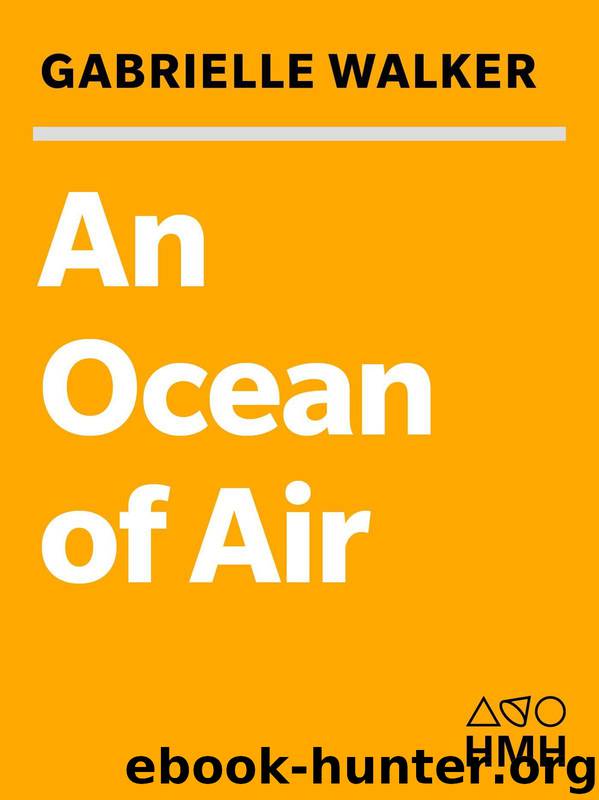An Ocean of Air: Why the Wind Blows and Other Mysteries of the Atmosphere by Gabrielle Walker

Author:Gabrielle Walker
Language: eng
Format: mobi
Publisher: Houghton Mifflin Harcourt
Published: 2008-08-04T00:00:00+00:00
In the next few months, Lovelock’s results wafted over the Atlantic to America, where they triggered a question in the mind of Sherwood (“Sherry”) Rowland, a chemistry professor at the University of California, Irvine. Rowland realized that, even though Lovelock had found only tiny concentrations of CFCs in the atmosphere, together they added up to just about all of the CFCs being produced. That was odd, because most residents of the atmosphere last only a few weeks, before being reacted away or washed out in the rain. If Lovelock’s measurements were right, it seemed that CFCs stayed around in the air for an extraordinarily long time. Rowland wasn’t worried by this, just curious. He knew that nothing lasts forever. What, he wondered, would eventually happen to the CFCs?
Rowland was busy with his regular research involving radioactivity, as well as all the efforts involved in running his department. Fortunately, he had a bright young postdoctoral student to whom he could hand over the problem. Mario Molina had been born in Mexico City, the son of an ambassador. His background coupled with his undoubted intelligence had opened many doors, and he had studied in some of Europe’s most prestigious institutions. But he preferred the American graduate program, and had recently finished his Ph.D. at Berkeley. He was looking for something to do next.
What Rowland proposed seemed like an interesting enough academic exercise: track the CFCs in the atmosphere, and work out what happens to them. The first thing Molina’s calculations told him was that the lower part of the atmosphere held no fears for CFCs. They were insoluble in water, so they couldn’t be rained back down to the ground, and there were no other reactions that could destroy them. Eventually, they would have to make it above the atmospheric ceiling that contains all our wind, clouds, and weather, and emerge into the bright, rarefied levels of the stratosphere.
And that’s where the trouble would start. As they floated upward, into the ozone layer, the CFCs would encounter ultraviolet rays for the first time. Any stray ray that hadn’t yet been soaked up by some kamikaze ozone molecule could smash into a CFC molecule instead. Like a miniature bolt of electricity, this would turn each CFC into a monster.
The danger comes because CFCs contain the element chlorine. When chlorine is safely locked up in its molecular cage it’s fine. But the moment it is released by the action of ultraviolet rays, a chlorine atom begins its rampage. Through a complicated series of reactions, any one chlorine atom effectively rips off the extra oxygen atom from an ozone (O3) molecule, leaving behind an ordinary molecule of oxygen (O2). The same atom of chlorine could then repeat the process with another molecule of ozone, and these two extras would then react together. The upshot: Two molecules of protective ozone turn into three molecules of useless oxygen (or, in the language of chemical equations: 2O3→3O2).
But the really troublesome part was how effectively these chlorines would do their job.
Download
This site does not store any files on its server. We only index and link to content provided by other sites. Please contact the content providers to delete copyright contents if any and email us, we'll remove relevant links or contents immediately.
Man-made Catastrophes and Risk Information Concealment by Dmitry Chernov & Didier Sornette(5958)
The Revenge of Geography: What the Map Tells Us About Coming Conflicts and the Battle Against Fate by Kaplan Robert D(4052)
Zero Waste Home by Bea Johnson(3808)
COSMOS by Carl Sagan(3592)
Good by S. Walden(3523)
In a Sunburned Country by Bill Bryson(3509)
The Fate of Rome: Climate, Disease, and the End of an Empire (The Princeton History of the Ancient World) by Kyle Harper(3035)
A Wilder Time by William E. Glassley(2837)
Camino Island by John Grisham(2779)
Organic Mushroom Farming and Mycoremediation by Tradd Cotter(2662)
The Ogre by Doug Scott(2659)
Human Dynamics Research in Smart and Connected Communities by Shih-Lung Shaw & Daniel Sui(2479)
Energy Myths and Realities by Vaclav Smil(2464)
The Traveler's Gift by Andy Andrews(2438)
9781803241661-PYTHON FOR ARCGIS PRO by Unknown(2343)
Inside the Middle East by Avi Melamed(2331)
Birds of New Guinea by Pratt Thane K.; Beehler Bruce M.; Anderton John C(2238)
A History of Warfare by John Keegan(2216)
And the Band Played On by Randy Shilts(2169)
